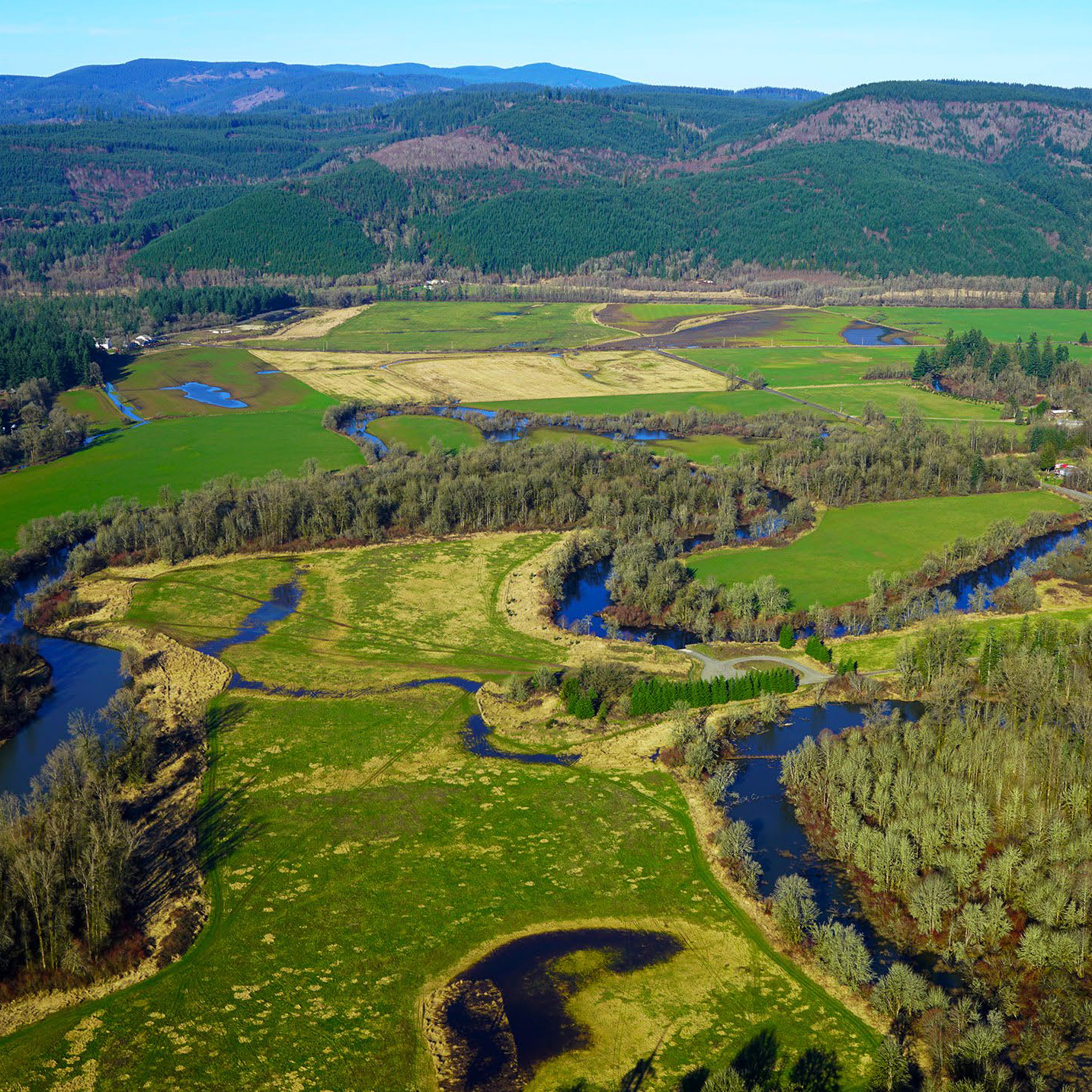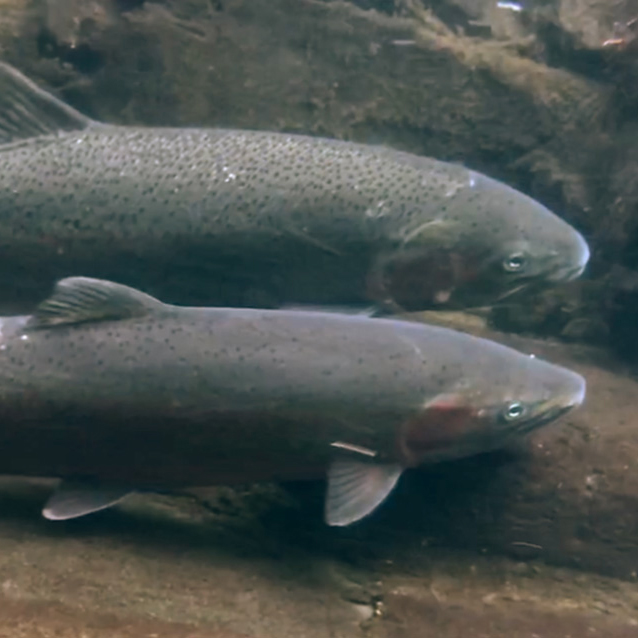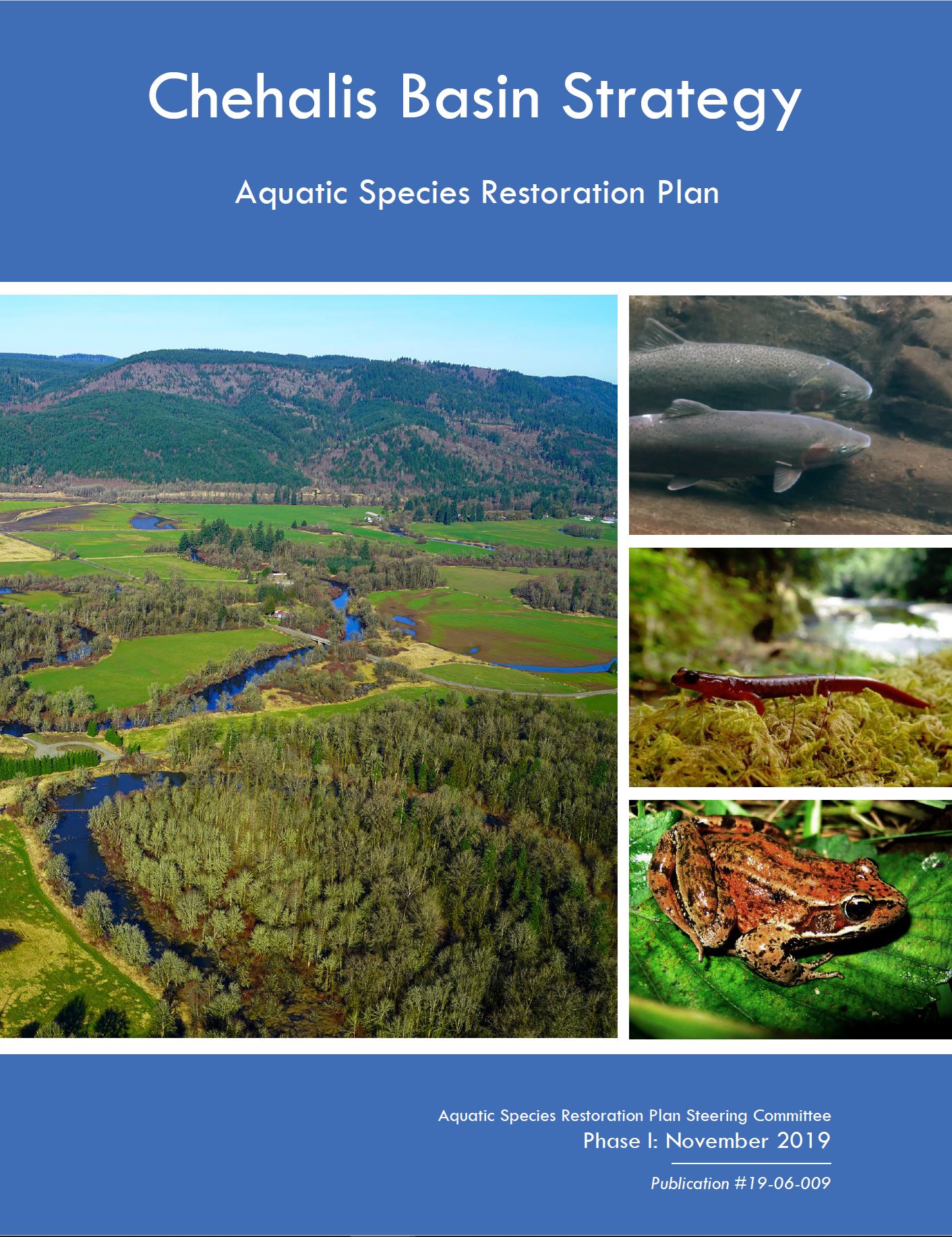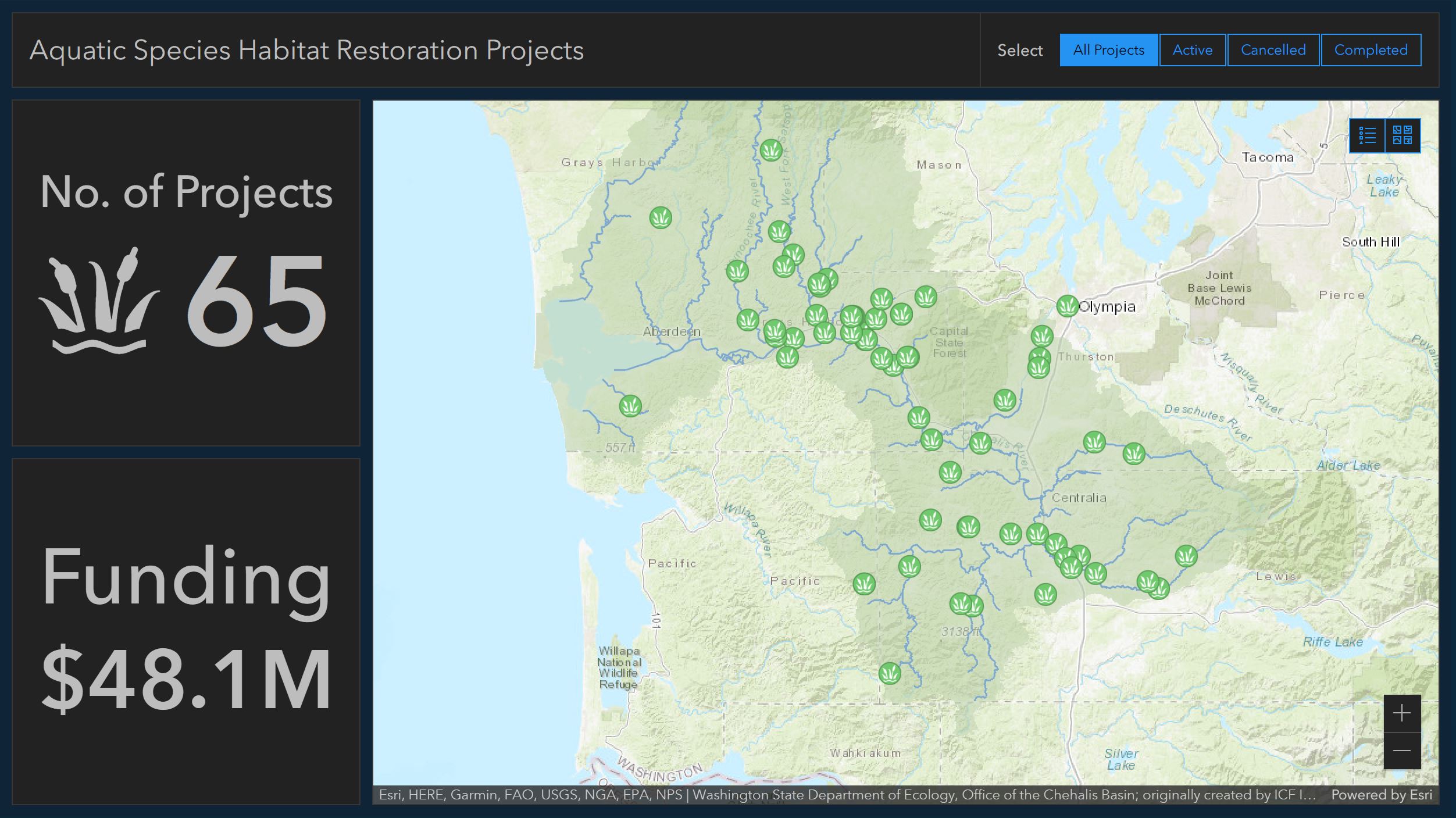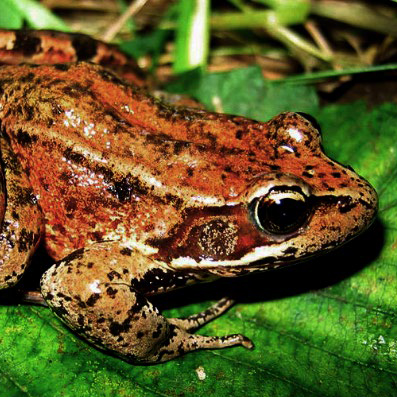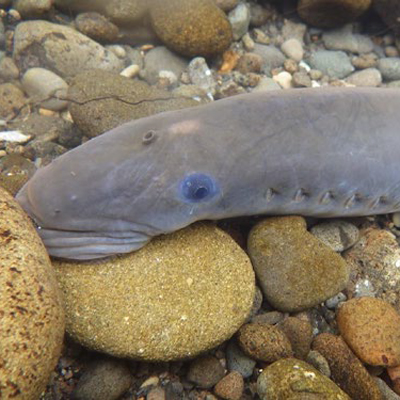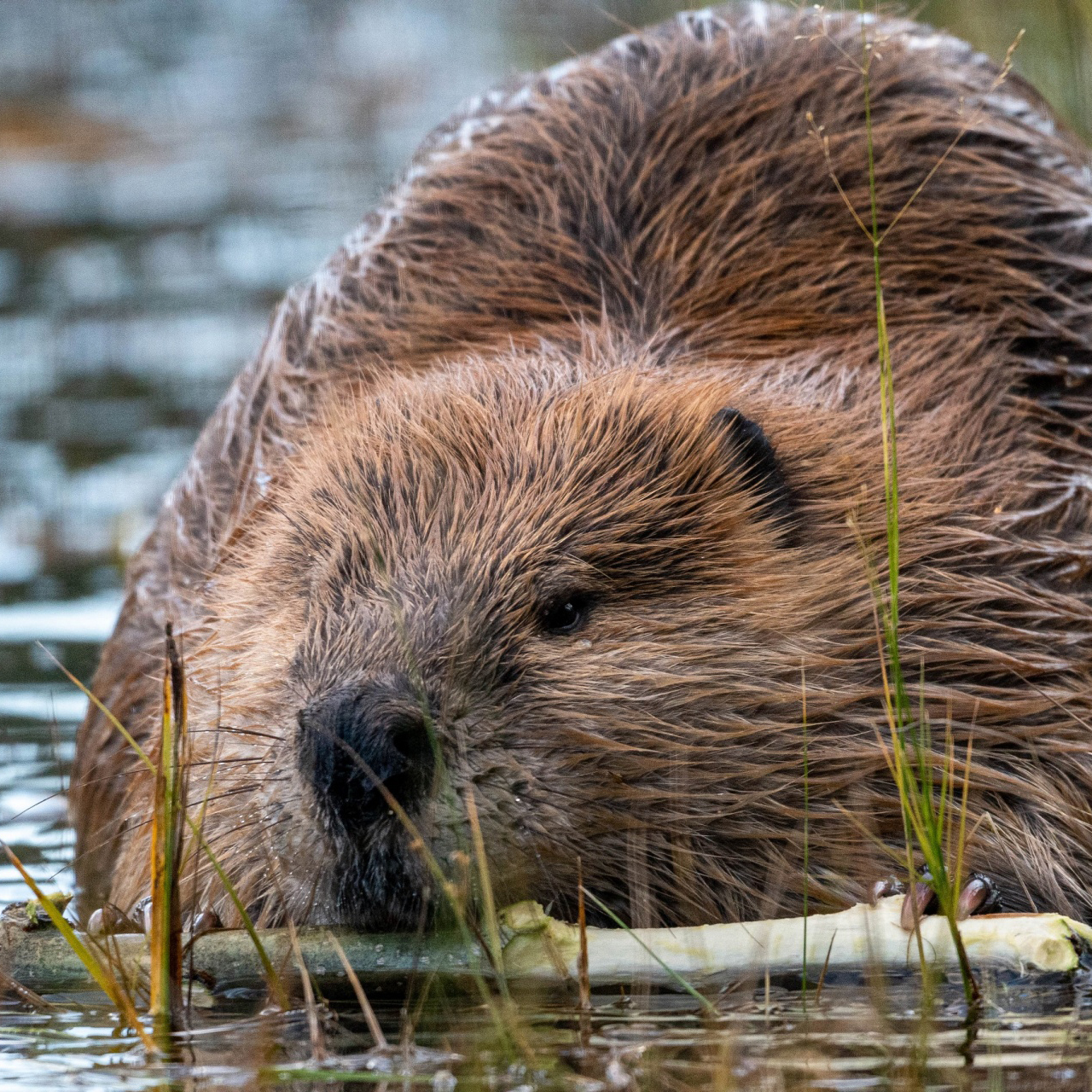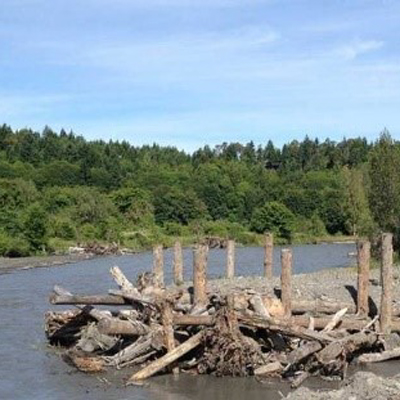Aquatic Species Restoration Program
Diverse aquatic and riparian habitat comingles with farmland in the Chehalis Basin.
Salmon and other aquatic species in the Chehalis River basin are declining in the face of habitat loss and climate change. The Chehalis basin is one of the few major river basins in Washington without any federally-listed endangered salmon at this time. The basin also supports the highest diversity of amphibian species anywhere in the state.
The Aquatic Species Restoration Program (ASRP) is one of the key components of the Chehalis Basin Strategy. It is a science-based program designed to help restore aquatic species habitat and enhance local economies. It is designed to efficiently and effectively rebuild and protect a productive ecosystem that is also resilient to the impacts of climate change including flooding, drought, sea level rise and shoreline erosion.
The ASRP is administered by the Chehalis Basin Board, which is comprised of representatives from local and tribal governments, Ecology's Office of the Chehalis Basin and other state agencies, as well as agricultural, environmental, and economic interests that present a diversity of opinion and experience.
Salmon and steelhead runs have been declining for many years in the Chehalis Basin.
The Chehalis River basin is one of the only remaining river basins in Washington where no salmon species are currently listed as threatened or endangered. It is also home to the most diverse mix of amphibian species in the state, including the Oregon spotted frog, a threatened species under the federal Endangered Species Act, as well as many other native fish and wildlife species.
However, the basin's ecosystem has been substantially changed from its historical conditions through modifications to the environment. This includes removal of wood from rivers, use of splash dams, stream channel straightening, and removal of riparian forests. Many of these actions disconnected the rivers in the basin from their previous side channels and floodplain wetlands. It also reduced cover, shading, and aquatic habitat area.

The Oregon spotted frog (Rana pretiosa), a threatened species of frog found in the Chehalis River basin. Image courtesy: Troy Hibbitts
The ASRP describes many of the specific challenges the Chehalis basin and its rivers and tributaries are facing, including:
- Declining returns of spring-run Chinook salmon and other native salmon and steelhead trout populations.
- Shifts in weather patterns due to climate change including drier summer weather, lower stream flows, and warmer water temperatures.
- Loss of critical habitat affecting native fish, mammals, amphibians, birds, and other species.
- Competition from non-native and invasive species.
About the program
The Aquatic Species Restoration Plan, Phase I publication.
The ASRP is both a living document and plan for the Chehalis River basin. It outlines general actions that can be taken on a basin-wide level, and makes recommendations for actions for tributary rivers and streams that can help restore and enhance habitat.
In 2019, we released Phase 1 of the ASRP. We anticipate multiple revisions of this plan, adjusting to feedback from further monitoring and scientific studies. The Chehalis Basin Board will use this plan to guide ongoing and future habitat and species restoration and enhancement projects within the basin.
ASRP projects
Our Office of Chehalis Basin, Department of Fish and Wildlife, and Chehalis Basin Board are working together to undertake studies and put projects in place that protect and enhance aquatic habitat within the basin. We have created an interactive storymap that details these projects, their status, and the investment of public funds. It also highlights some of the recent work done and upcoming projects.
Partners in restoration
The ASRP is a collaborative process that reflects diverse interests across the basin. It is designed to solve multiple challenges with efficient investments in land protection, restoration, and community planning. Taken together, the efforts of local and tribal governments, state agencies, landowners, and conservation groups add up to more than a single entity could do alone. Representatives of these groups participate on committees to guide adaptive management, improve implementation, and prioritize projects throughout the basin.
Chehalis Basin Board
The state legislature established the Chehalis Basin Board to provide long-term oversight of the Chehalis Basin Strategy. The seven-member board represents the Chehalis River Basin Flood Authority, Confederated Tribes of the Chehalis Reservation, and Quinault Indian Nation, as well as agricultural, environmental, and economic interests in the basin. There are also five non-voting board members representing various state agencies.
Aquatic Species Restoration Program Steering Committee
The Quinault Indian Nation, Confederated Tribes of the Chehalis Reservation, and state Department of Fish and Wildlife (WDFW) lead the Chehalis Basin ASRP Steering Committee. The committee provides policy direction for the ASRP, convenes subcommittees such as the Science and Technical Review Team, and recommends projects and budgets for ASRP funding to the Chehalis Basin Board. Additional representation comes from Ecology's Office of the Chehalis Basin, the Chehalis Basin Partnership, a local conservation district representative, and other non-profit entities and environmental consultants.
Local conservation districts
The Grays Harbor, Lewis, Mason and Thurston conservation districts work with landowners to guide them through participating in projects.
Research and studies
Measuring how projects affect habitat and aquatic species population is vital to ensuring the continued success of the program. The ASRP Steering Committee and their parters have commissioned many studies within the Chehalis Basin, past and present, to track the status of aquatic species and the environment of the Chehalis Basin. Select one of the categories below to see a list of published studies and ongoing research within that specific area.


